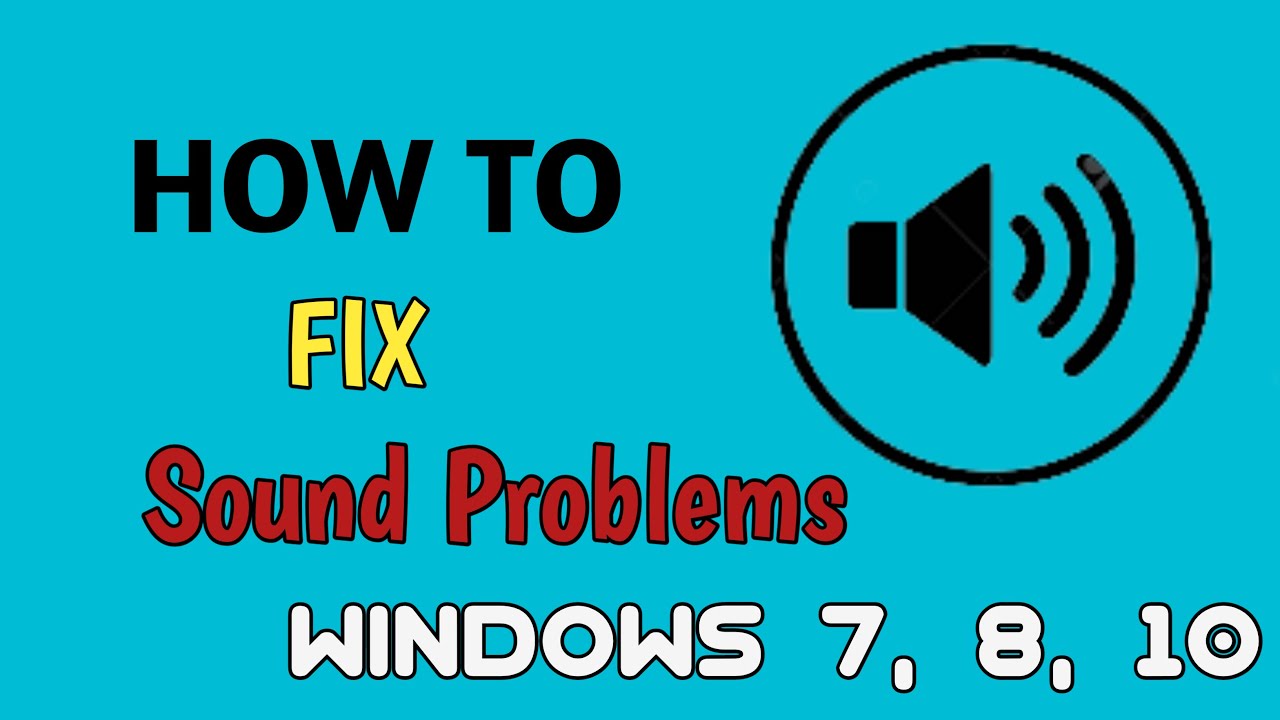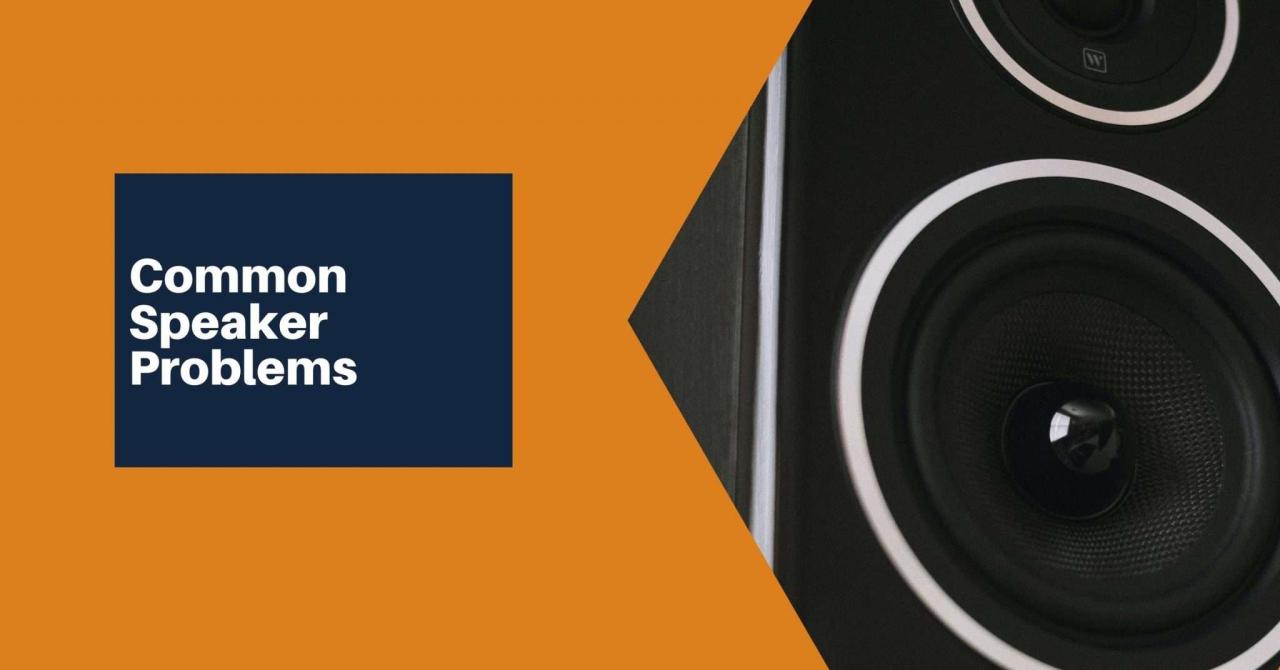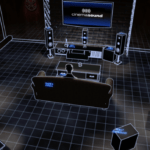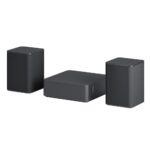Delving into 5 Common Surround Sound Problems and How to Fix Them, this introduction immerses readers in a unique and compelling narrative, with detailed analytical writing style that is both engaging and thought-provoking from the very first sentence.
Surround sound systems are known for their immersive audio experience, but they can come with their own set of challenges. In this guide, we will explore the five most common issues faced with surround sound systems and provide practical solutions to fix them effectively.
Common Surround Sound Problems
Surround sound systems can elevate your audio experience, immersing you in a world of sound like never before. However, these systems can sometimes encounter issues that hinder the quality of the sound output. Let’s explore five common surround sound problems and how to fix them.
1. Incorrect Speaker Placement
One of the most common issues with surround sound systems is incorrect speaker placement. If speakers are not positioned correctly, it can lead to imbalanced sound distribution, affecting the overall audio quality. For example, placing the center speaker too high or too low can result in dialogue being muffled or unclear.
2. Wiring Problems
Wiring problems can also plague surround sound systems, causing issues like static noise, audio dropouts, or no sound at all. Incorrectly connected cables or damaged wires can disrupt the signal flow and impact the sound output. Ensuring all connections are secure and using high-quality cables can help resolve this issue.
3. Room Acoustics
The acoustics of the room where the surround sound system is installed play a crucial role in the audio experience. Poor room acoustics, such as hard surfaces causing sound reflections or echoes, can distort the sound quality. Implementing acoustic treatments like rugs, curtains, or sound-absorbing panels can improve the overall sound clarity.
4. Calibration Errors
Calibration errors in the surround sound system can result in unbalanced audio levels, where some speakers are too loud while others are too soft. This can lead to a disjointed listening experience and detract from the immersive quality of surround sound. Properly calibrating the system using an audio calibration tool can help rectify this issue.
5. Compatibility Issues
Compatibility issues between different components of the surround sound system, such as the AV receiver and speakers, can cause disruptions in the audio output. Incompatibility can lead to sound distortion, lack of certain audio channels, or limited functionality. Ensuring that all components are compatible and up to date with the latest firmware can resolve this problem.
Audio Distortion: 5 Common Surround Sound Problems And How To Fix Them
Audio distortion in surround sound systems can be a frustrating issue that affects the overall quality of your listening experience. It can manifest as crackling, buzzing, or muffled sound, disrupting your enjoyment of movies, music, or games. Understanding the causes of audio distortion and how to troubleshoot and fix these issues is crucial for maintaining optimal sound quality in your surround sound setup.
Causes of Audio Distortion
Audio distortion can be caused by a variety of factors, including:
- Overdriving the speakers or amplifier, leading to clipping and distortion.
- Interference from other electronic devices or cables, causing signal distortion.
- Incorrect speaker placement or calibration, resulting in sound reflections and echoes.
- Defective audio cables or connectors, introducing noise and distortion into the audio signal.
Tips to Fix Audio Distortion
- Ensure that the volume levels are properly set to avoid overdriving the speakers or amplifier.
- Check for any sources of interference near your surround sound system and remove or relocate them.
- Calibrate your speakers according to the manufacturer’s recommendations to optimize sound quality.
- Inspect and replace any damaged or faulty audio cables to eliminate signal distortion.
Scenarios of Audio Distortion
Audio distortion can occur in various scenarios, such as:
- Playing audio at high volumes without proper speaker or amplifier handling.
- Using low-quality or damaged audio cables that compromise the integrity of the audio signal.
- Placing speakers too close to walls or corners, leading to sound reflections and distortion.
- Having multiple electronic devices in close proximity to the surround sound system, causing interference and signal distortion.
Speaker Placement
Proper speaker placement is crucial in a surround sound setup to ensure an immersive audio experience. The positioning of speakers can greatly impact the quality of sound and the overall atmosphere created in your home theater or entertainment room.
Guidelines for Correct Speaker Placement
- Place the front speakers at ear level when seated for optimal sound projection.
- Position the center speaker directly above or below the TV screen to anchor dialogue to the on-screen action.
- Place surround speakers slightly above ear level and to the side or behind the seating area for enveloping sound effects.
- The subwoofer can be placed anywhere in the room for low-frequency effects, but corner placement often yields the best results.
Common Mistakes to Avoid
- Avoid placing speakers too close to walls or corners, as this can cause sound reflections and distortions.
- Do not place speakers unevenly or too far apart, as this can lead to imbalanced sound distribution.
- Avoid obstructing speakers with furniture or other objects, as this can block the sound and diminish the audio quality.
- Ensure proper cable management to avoid tripping hazards and interference with speaker performance.
Connectivity Problems

When it comes to setting up a surround sound system, connectivity is key. Without proper connections, you may experience issues with sound quality and overall performance. Let’s delve into some common connectivity problems and how to resolve them effectively.
Cable Issues, 5 Common Surround Sound Problems and How to Fix Them
One of the most common connectivity problems with surround sound systems is related to cables. If you are experiencing no sound or poor audio quality, check the cables connecting your speakers to the receiver. Make sure they are securely plugged in and not damaged. Replace any faulty cables to see if that resolves the issue.
Connector Troubles
Another common problem is with the connectors used in your setup. If you are using multiple devices with your surround sound system, ensure that the connectors are compatible and properly connected. Sometimes, a loose or incompatible connector can cause sound distortion or no audio output. Double-check all connections and replace any faulty connectors.
Wireless Connectivity Issues
If you are using wireless technologies to connect your speakers to the receiver, interference or signal loss can be a major problem. Make sure there are no obstructions blocking the signal between the devices. Additionally, check for any other electronic devices in the vicinity that may be causing interference. Consider repositioning your devices or using a different wireless channel to improve connectivity.
Calibration and Settings

Calibrating your surround sound system is crucial to ensure you are getting the best audio performance possible. Proper calibration helps in balancing the audio levels, adjusting speaker distances, and optimizing equalization settings for a more immersive listening experience.
Step-by-step Guide for Calibrating Audio Settings
- Start by setting up your surround sound system according to the manufacturer’s instructions.
- Access the audio settings menu on your receiver or amplifier to begin calibration.
- Use a calibration microphone, if provided, to automatically adjust speaker levels and distances.
- Alternatively, you can manually adjust speaker levels using a sound meter for more precise tuning.
- Experiment with different equalization settings to find the best sound profile for your listening environment.
Tips for Adjusting Settings
- Make sure to set the volume levels of each speaker correctly to avoid overpowering or underwhelming sound.
- Adjust speaker distances in the settings menu to ensure sound arrives at your listening position simultaneously.
- Utilize the equalization settings to fine-tune the audio output based on your preferences and room acoustics.
- Consider investing in a room correction system or software for advanced audio calibration.
Summary

In conclusion, addressing these common surround sound problems can greatly enhance your audio experience and ensure optimal sound quality. By troubleshooting audio distortion, perfecting speaker placement, resolving connectivity issues, and calibrating settings, you can elevate your home entertainment to a whole new level. Dive into the world of surround sound with confidence, knowing you have the knowledge to tackle any issues that may arise.
FAQ Insights
What causes audio distortion in surround sound systems?
Audio distortion in surround sound systems can be caused by issues like speaker interference, incorrect speaker placement, or amplifier problems. To troubleshoot, check connections, adjust speaker positions, and ensure equipment compatibility.
How important is calibration for optimal surround sound performance?
Calibration is crucial for achieving the best audio output in your surround sound system. By adjusting settings such as equalization, volume levels, and speaker distances, you can create a balanced sound environment tailored to your listening space.
What common mistakes should be avoided when placing speakers in a surround sound setup?
Common mistakes include placing speakers too close to walls, not angling them correctly, or neglecting to balance sound distribution. To avoid these issues, follow guidelines for speaker placement and experiment with positioning for the best results.




